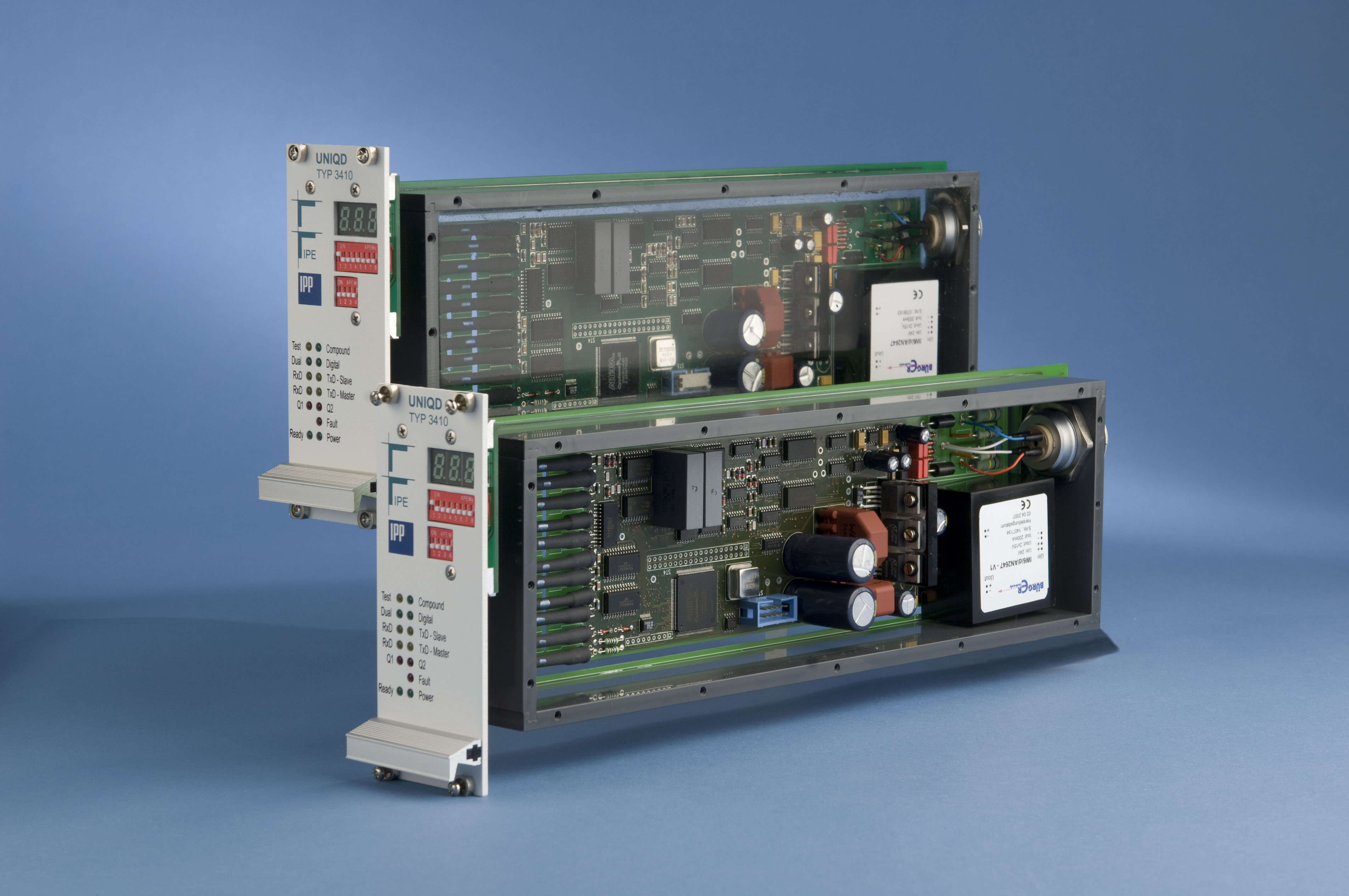In electrical systems that are subjected to very high currents in the kiloampere range, such as superconducting coils used to generate strong magnetic fields, the electrical conductivity must be monitored. To control this, the voltage across the conductor to be monitored is measured permanently and compared with small thresholds in the millivolt range. An early detected drop in current carrying capacity thus prevents expensive repairs to superconducting components.
Technology
The quench detection system developed and patented at the IPE of KIT registers reliably and as early as possible a faulty voltage drop at the conductor.
The redundant fail-safe differential detector system enables extensive monitoring in the millivolt range. It can be used reliably during ramping, start-up and shut-down of the high current system. A problem with the use of common voltage measuring devices is the self-induction voltage which is disturbing during high current ramping. With ordinary systems this cannot be distinguished from the voltage drop due to a reduction in conductance.
The KIT quench detector UniQD uses a voltage difference measuring principle with an additional mutual balancing of the conductor sections to be monitored. Due to the resulting optimized neutralization of the self-induction voltage, even small reductions in conductance can be detected at the beginning. The system can also be cascaded by combining different individual sections into a group and relating them to another section.
For the parameterization and automated operation of larger detector systems a comprehensive Windows® software is available, which was also developed at IPE.
Projects
The system is used, for example, in Greifswald at the experimental fusion reactor W7-X (70 superconducting magnet coils, 500 detectors). Further installations can be found at the HZB Berlin (high-field magnet project), at the GSI Helmholtz Center for Heavy Ion Research in Darmstadt (magnet test facility for the FAIR project), and on the site of KIT Campus North. Another system for the FRIB accelerator at Michigan State University is in preparation.


